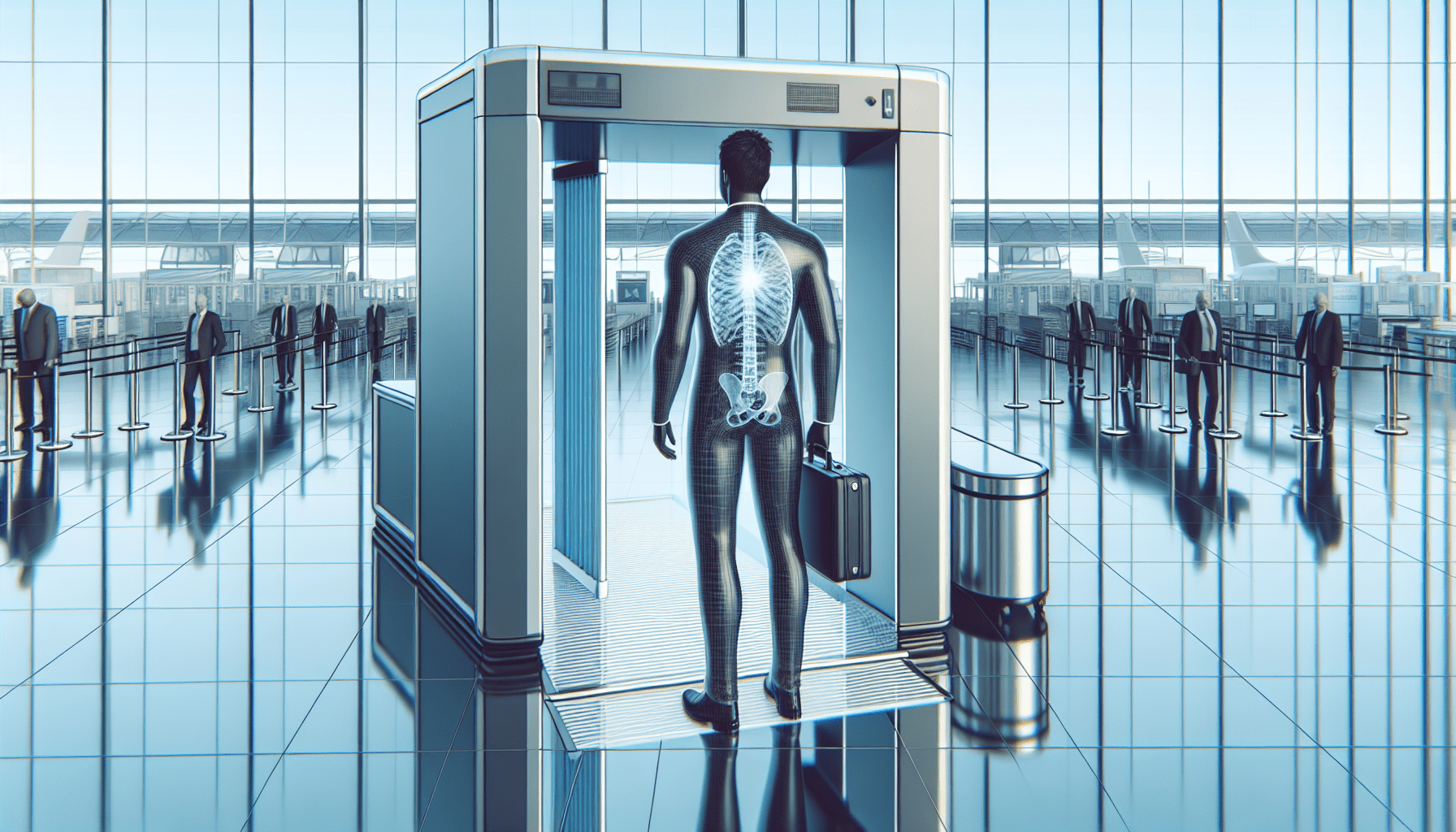SwissGear Sion Softside Expandable Luggage, Black, Carry-On 21-Inch
$80.73 (as of November 20, 2024 15:23 GMT +00:00 - More infoProduct prices and availability are accurate as of the date/time indicated and are subject to change. Any price and availability information displayed on [relevant Amazon Site(s), as applicable] at the time of purchase will apply to the purchase of this product.)Have you ever wondered if traveling with a pacemaker could complicate your journey through airport security? You’re certainly not alone. One of the most frequently asked concerns for travelers with pacemakers is whether TSA’s body scanners are safe for their devices. Let’s break this down, shall we?

Shop These Accessories for a Comfortable Trip
Understanding TSA’s Advanced Imaging Technology (AIT)
When you board a plane in the United States, you’ll likely encounter an advanced imaging technology (AIT) machine at the airport. These gadgets are pretty much standard at all major airports and even half of the smaller ones. Introduced to speed up security checks and reduce the need for invasive pat-downs, AIT machines seem like big, complicated magical portals. But how safe are they for someone like you, with a cardiac implant?
The 2019 Safety Study
According to a 2019 study published in Heart, Lung, and Circulation, travelers with pacemakers can breeze through AIT screenings without worry. The study tested 302 patients with cardiac devices, putting them through airport-style body scanners. Guess what? The results showed zero electromagnetic interference, and all the pacemakers kept their rhythm like a best-selling jazz album. So, you can walk through those TSA body scanners with peace of mind.
The Metal Detector Issue
While AIT machines are your friends, metal detectors might not be as cordial. TSA recommends that travelers like you avoid walk-through metal detectors at the checkpoint. These machines are a tad more… intrusive when it comes to pacemakers. If your airport uses metal detectors, your mission is to minimize the time you spend near those areas.
What To Do If Only Metal Detectors Are Available
Here’s a quick guide for navigating this:
- Limit Time Near Metal Detectors: Try not to linger around these areas.
- Inform Security Officers: Make sure they know about your pacemaker, and ask them not to hold the wand over the device for too long.
- Medical Device ID Card: Carry and present your medical device ID. It can be a lifesaver in avoiding unnecessary pat-downs.
Remember, once a pat-down is requested, you can’t refuse it, so it’s better to be upfront about your pacemaker.
General Tips for Traveling With a Pacemaker
Let’s get down to some pro tips for your travels. Being prepared is half the battle won, right?
Prepare Your Documents
- Medical Device ID: Always have your medical device identification card handy.
- Doctor’s Note: A note from your cardiologist explaining your condition can be helpful, especially if you’re traveling internationally or facing language barriers.
At the Airport
- Early Arrival: Arrive early to allow yourself plenty of time to go through these additional security measures.
- Inform Security Personnel: As mentioned, let them know about your pacemaker upfront.
- Communicate Needs: Clear communication can make the difference between a smooth security check and a stressful one.
On the Plane
- Stay Hydrated: Flights can be dehydrating. Make sure to drink enough water.
- Move Around: Get up and move to improve circulation, especially on long flights.
- Medication: Carry any medication you need in your carry-on, not in checked baggage. You don’t want to be in a situation where your meds are with your lost luggage.
Checkups and Maintenance
- Post-Travel Checkup: It’s a good idea to have a quick checkup to ensure everything is functioning correctly after your trip.
- Regular Maintenance: Keep up with regular maintenance and checkups for your pacemaker. It’s like giving your device a mini-vacation from electrical interference!

Shop These Accessories for a Comfortable Trip
Real-Life Experiences
Hearing from others in the same boat can be reassuring. Numerous travelers with pacemakers have shared their experiences online, reporting that as long as they were upfront about their devices, their trips were relatively hassle-free.
Personal Stories
-
John, a Frequent Business Traveler: “I travel monthly for work. I always show my medical card to TSA and inform them about my pacemaker. The agents have always been accommodating, and I usually go through without any hiccups.”
-
Linda, a Retiree Touring Europe: “I was anxious at first, but after informing the security at various airports, I found it wasn’t as stressful as I imagined. Just a bit more time required.”
Online Communities
There are plenty of Facebook groups and forums where you can find advice from fellow pacemaker wearers. Engaging in these communities can provide tips and support from people who truly understand your concerns.
Common Myths and Misconceptions
Let’s tackle some myths surrounding pacemakers and travel.
AIT Screens and Radiation
Some folks worry that radiation from AIT screenings can harm their pacemaker. Here’s the scoop: the amount of radiation from these scanners is so minimal it’s like a drop of water in an ocean. Your pacemaker is built to withstand far more than what the machine emits.
Airport Announcements and Signals
Another myth is that airport announcements or other signals can interfere with your pacemaker. Modern pacemakers are designed to resist interference from most common electronic devices, including those used in airports.
In-Flight Wi-Fi
You might be wondering if in-flight Wi-Fi signals could be problematic. Rest easy; these signals are unlikely to impact your pacemaker.
Preparing for International Travel
Traveling internationally with a pacemaker can feel like an epic quest, but it doesn’t have to be daunting.
Research Your Destination
Get acquainted with the security protocols at your destination. Some countries might have different procedures, so it’s good to know what you’re walking into.
Language Barriers
If you’re heading to a place where English isn’t the primary language, consider getting a translated note explaining your condition.
Health Insurance
Ensure your health insurance covers you at your destination. Some plans offer international coverage, while others require additional travel insurance.
TSA PreCheck and Other Programs
Frequent traveler? TSA PreCheck might be a worthy investment. This program allows you to go through a quicker and less invasive security check. It’s like getting a VIP pass to skip the longer lines.
Global Entry for International Travelers
If international travel is on your agenda, look into Global Entry. This program speeds up customs checks upon returning to the States. Not only will you save time, but you’ll also reduce stress, something your heart and pacemaker will surely appreciate.
The Lowdown on Security Alerts and Emergency Responses
Let’s talk about what could happen if your pacemaker sets off a security alarm and how TSA handles it.
Setting Off Alarms
If your pacemaker causes an alert, don’t panic. It’s not an uncommon occurrence, and TSA officers are trained to handle these situations delicately.
TSA Protocols
TSA officers will often ask for your medical device ID and might conduct a manual pat-down. While this might feel invasive, providing documentation and being cooperative can speed up the process.
In Case of Emergency
Always have an emergency contact list that includes your cardiologist’s contact information. It’s smart to have this list on paper and saved in your phone.
Monitoring Your Pacemaker While Traveling
There are some fantastic remote monitoring options available today, allowing you to keep an eye on your pacemaker even when you’re halfway around the globe.
Remote Monitoring Systems
Many modern pacemakers come with remote monitoring solutions. These systems can send data to your healthcare provider and alert them if something is amiss.
Update Your Healthcare Provider
Before you travel, inform your healthcare provider about your trip. They might have specific recommendations or adjustments to make before you set off.
Final Thoughts
Traveling with a pacemaker might require a little extra planning, but it shouldn’t hinder your adventures. By understanding the safety of TSA’s body scanners, avoiding potential risks, and preparing thoroughly, you’ll be ready to travel with confidence and ease. Always listen to your body and consult your physician if you have any concerns. Happy and safe travels!
Shop These Accessories for a Comfortable Trip






